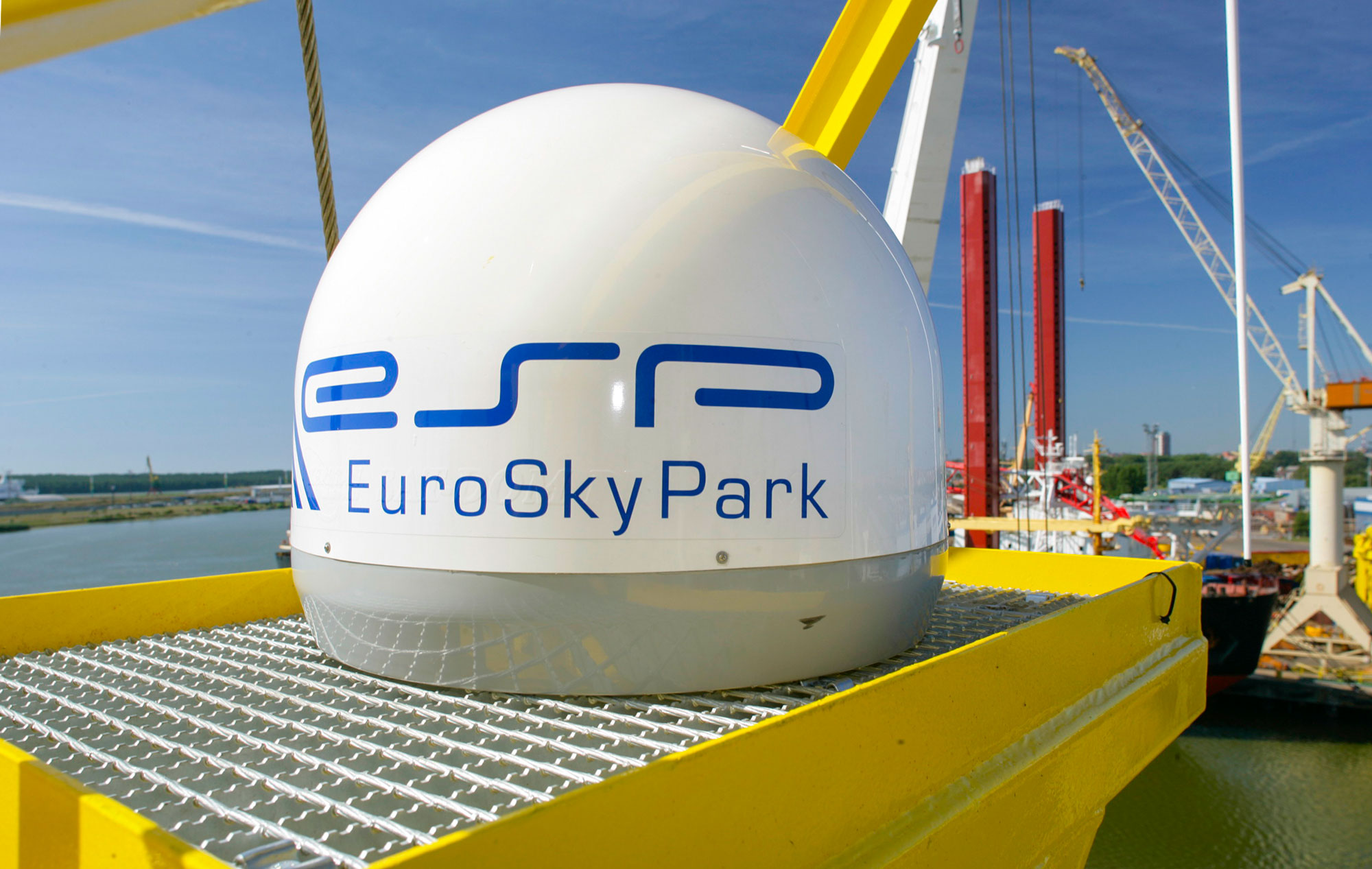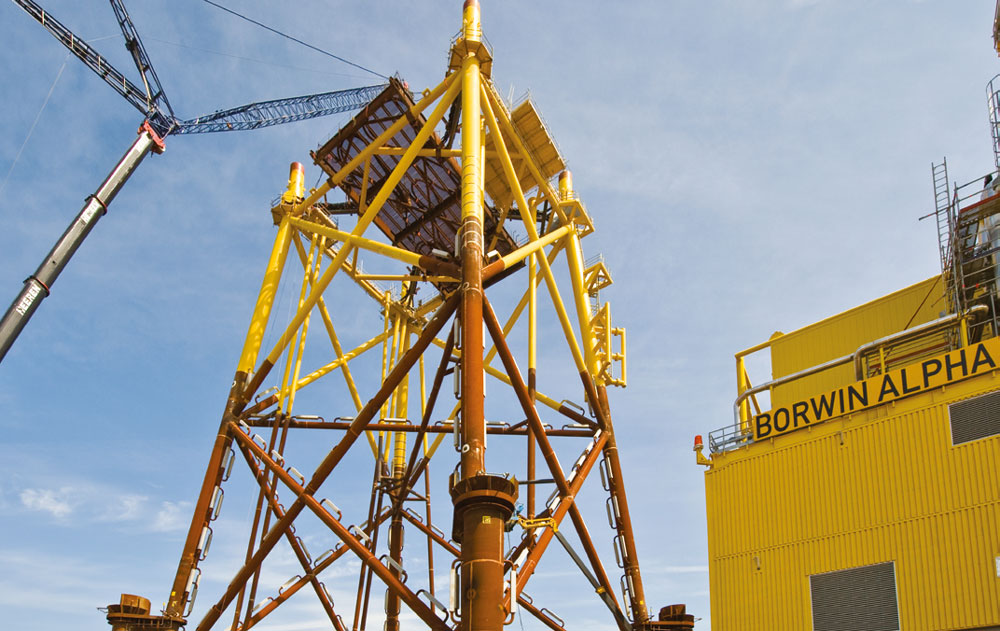
This event in the North Sea was an event of superlatives. BorWin alpha, the first offshore platform of its kind, was set up using the world‘s most powerful floating crane: The 3,200-ton converter platform – which is a kind of substation in the sea – resembles the heart of the first offshore grid connection using high-voltage direct current (HVDC) transmission technology. Here, directly on the high seas, the three-phase current is converted into direct current before it flows through cables to the substation in Diele near Papenburg in Germany.
The construction of the platform is just as complex as it sounds. Equipped with gigantic equipment and modern technology, several teams worked 24 hours a day, defying the forces of the North Sea and the occasional high waves.

Power generation at sea poses many challenges, as the installation of the converter platform has already shown. “Monitoring the systems is particularly important in this harsh environment,” explains project manager Dr. Constantijn Steinhusen at transpower. “To do this, we rely on a technology that delivers data around the clock in a very reliable yet cost-effective way.” And that is communication via satellite. The partner is EuroSkyPark GmbH (ESP), an operator of satellite communication systems for industry applications. ESP also ensured that the measuring, monitoring and control systems successfully went live. “Of course it was very exciting,” reports Thomas Maul, Managing Director of EuroSkyPark, on the exceptional two days of installing the transmission technology. “We were all on pins and needles here on land.” No wonder, since before any possible communication with the 40,000 kilometers distant satellite can get underway, a transmitter and receiver unit must be fitted to the uppermost part of the platform. “Initially the installation of this antenna was not even possible due to the weather conditions,” explains Maul.
“It was simply too dangerous to work at heights during such strong winds.” So the ESP technical team had to exercise patience on the platform. Only after two weeks – on June 6 – the time was finally right. The antenna could be aligned with the satellite with millimeter precision. “At 8.30 p.m., the decisive message came from the control center: “We‘ve got you on the screen,“ recalls Maul. “It‘s a great feeling when everything comes together.” The people out in the North Sea probably saw it the same way: applause and the assuring feeling of being connected to the world again. A day later, feedback also came from the sub-station in Diele: “All systems are available.”

Thomas Maul, CEO (ESP)
EuroSkyPark GmbH
Zitatgeber Vorname Name, ggf. Funktion + Firma